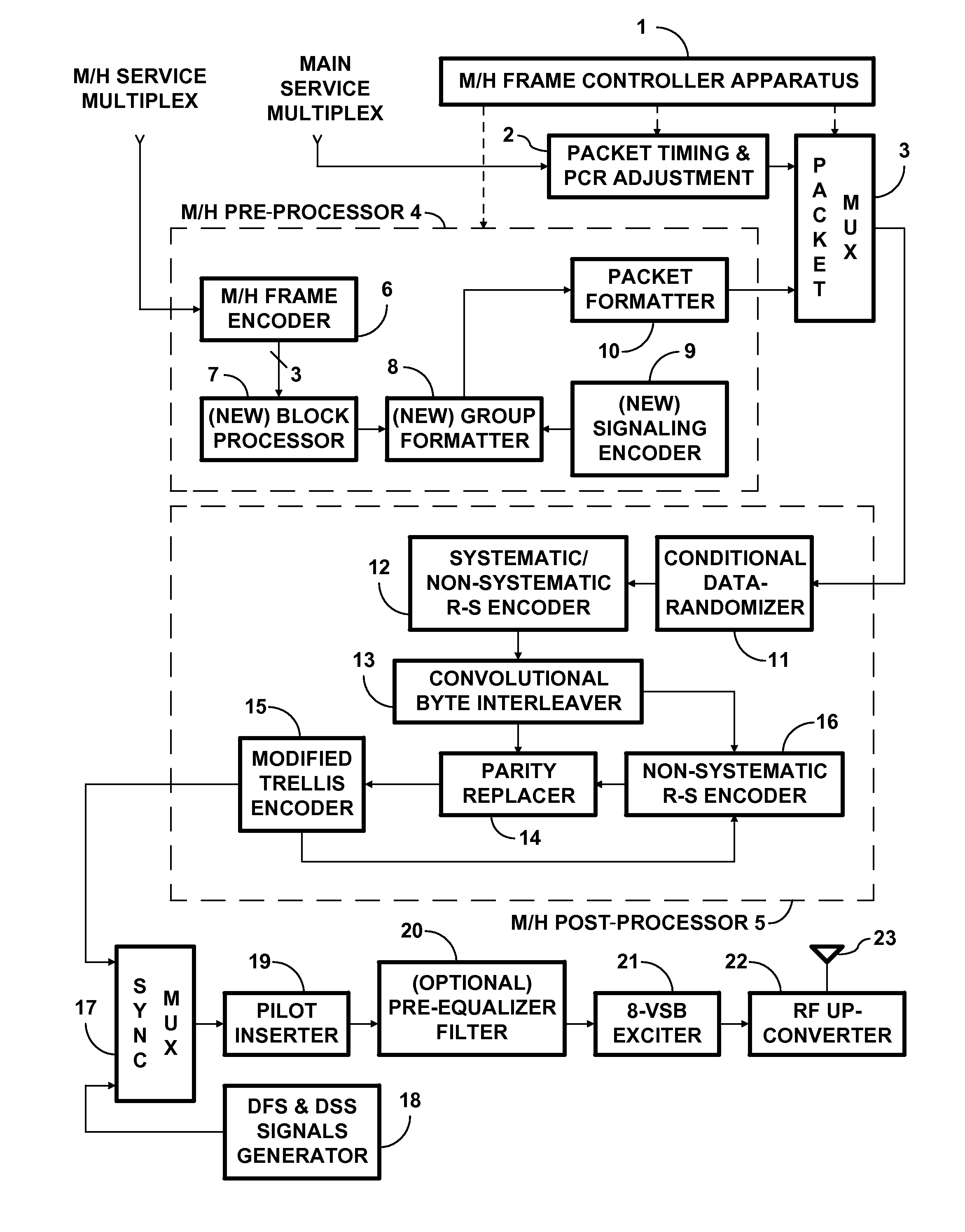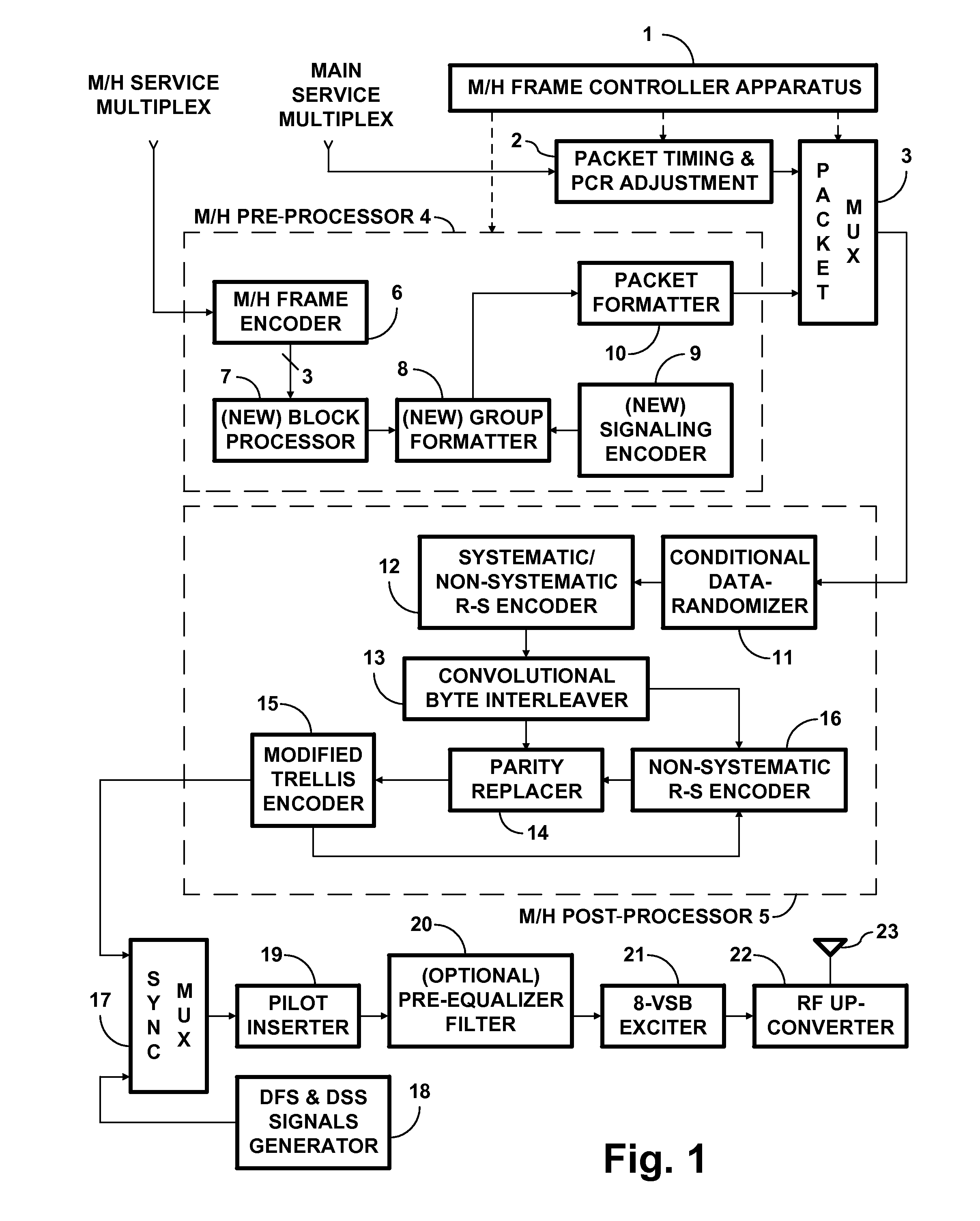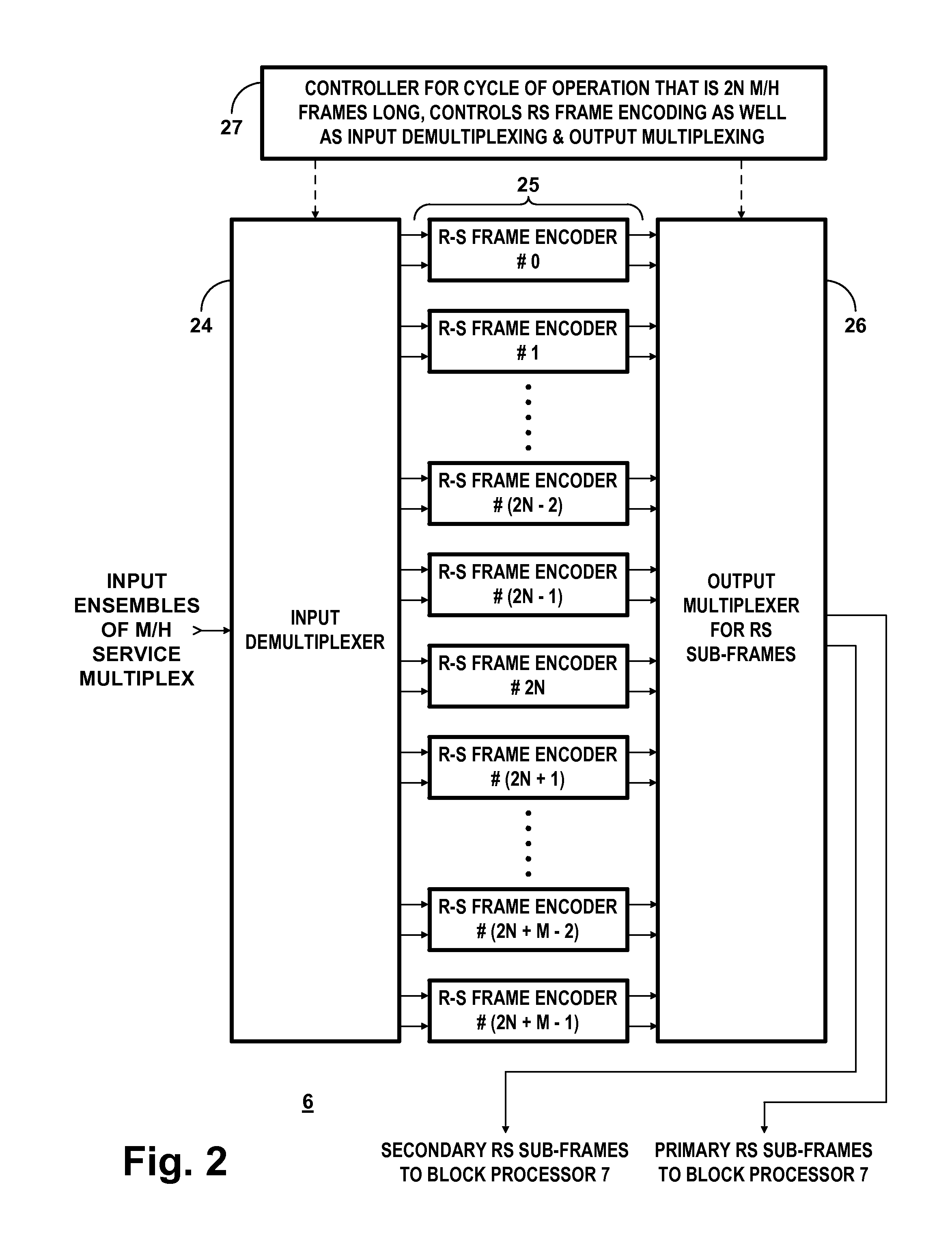Digital television systems employing concatenated convolutional coded data
a digital television and data technology, applied in the field of digital television (dtv) signals, can solve the problems of the decoder for the inner convolutional coding not responding to data bits, and the difficulty of changing channels quickly for the receiver of iterative-diversity sccc or pccc dtv signals, etc., and achieve the effect of tightening the confidence level
- Summary
- Abstract
- Description
- Claims
- Application Information
AI Technical Summary
Benefits of technology
Problems solved by technology
Method used
Image
Examples
Embodiment Construction
[0064]FIG. 1 shows transmitter apparatus for broadcast DTV signals including those intended for reception by mobile / handheld (M / H) receivers. The transmitter apparatus receives two sets of input streams: one consists of the MPEG transport stream (TS) packets of the main-service data and the other consists of the M / H-service data. The M / H-service data are encapsulated in 208-byte-long MPEG-like TS packets before emission, which MPEG-like TS packets have been called “M / H encapsulating packets” or more simply “MHE packets”. This avoids disrupting the reception of the main-service data by legacy 8-VSB receivers. M / H-service data are carried by Internet-Protocol (IP) packets, however. The FIG. 1 transmitter apparatus combines the MPEG TS packets of the main-service data and the IP TS packets of the M / H-service data within one stream of MPEG or MPEG-like TS packets. Then, the FIG. 1 transmitter apparatus processes the combined stream for transmission as an ATSC trellis-coded 8-VSB signal....
PUM
 Login to View More
Login to View More Abstract
Description
Claims
Application Information
 Login to View More
Login to View More - R&D
- Intellectual Property
- Life Sciences
- Materials
- Tech Scout
- Unparalleled Data Quality
- Higher Quality Content
- 60% Fewer Hallucinations
Browse by: Latest US Patents, China's latest patents, Technical Efficacy Thesaurus, Application Domain, Technology Topic, Popular Technical Reports.
© 2025 PatSnap. All rights reserved.Legal|Privacy policy|Modern Slavery Act Transparency Statement|Sitemap|About US| Contact US: help@patsnap.com



